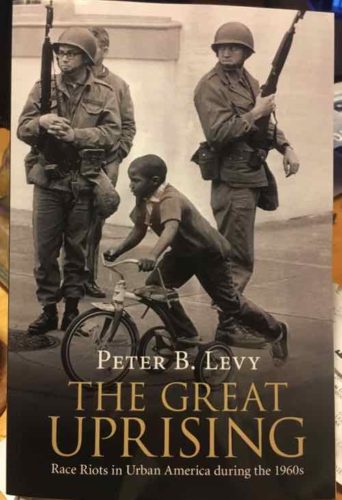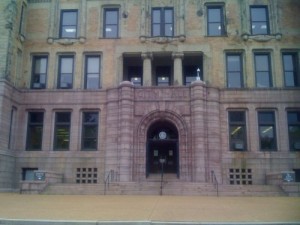New Book | The Great Uprising: Race Riots in Urban America during the 1960s by Peter B Levy
 I was alive during the 1960s…but only the last few years. As such, I have no memory of the many cultural changes that took place between 1960-1970. I asked my oldest brother, 67, about becoming a teenager in the 60s…in our hometown of Oklahoma City. His reply:
I was alive during the 1960s…but only the last few years. As such, I have no memory of the many cultural changes that took place between 1960-1970. I asked my oldest brother, 67, about becoming a teenager in the 60s…in our hometown of Oklahoma City. His reply:
Race Riots, rampant drug use, and anti war protests were all prevalent around the country, but primarily on the coasts. Race, drugs, and war protests were virtually nonexistent in Oklahoma at the time. The were some sit-ins downtown OKC and Tulsa, but nothing that matched the rest of the country or the riots in Tulsa in the 20s.
You can read more about the Tulsa race riot here.
A new academic book, due out next month, looks at race riots in America. The Great Uprising: Race Riots in Urban America during the 1960s is by Peter B. Levy:
Between 1963 and 1972 America experienced over 750 urban revolts. Considered collectively, they comprise what Peter Levy terms a ‘Great Uprising’. Levy examines these uprisings over the arc of the entire decade, in various cities across America. He challenges both conservative and liberal interpretations, emphasizing that these riots must be placed within historical context to be properly understood. By focusing on three specific cities as case studies – Cambridge and Baltimore, Maryland, and York, Pennsylvania – Levy demonstrates the impact which these uprisings had on millions of ordinary Americans. He shows how conservatives profited politically by constructing a misleading narrative of their causes, and also suggests that the riots did not represent a sharp break or rupture from the civil rights movement. Finally, Levy presents a cautionary tale by challenging us to consider if the conditions that produced this ‘Great Uprising’ are still predominant in American culture today. (Cambridge University Press)
You can read the introduction here. I was unable to find any reviews, other than those on the Cambridge site. Again, this is an academic book — not a coffee table book.
— Steve Patterson


 In the recent non-scientific Sunday Poll more than half of the responses supported a more traditional celebration of Valentine’s Day over the current commercialized day.
In the recent non-scientific Sunday Poll more than half of the responses supported a more traditional celebration of Valentine’s Day over the current commercialized day.